Georgia Spray On How to Create an Art Collection Without Breaking the Bank
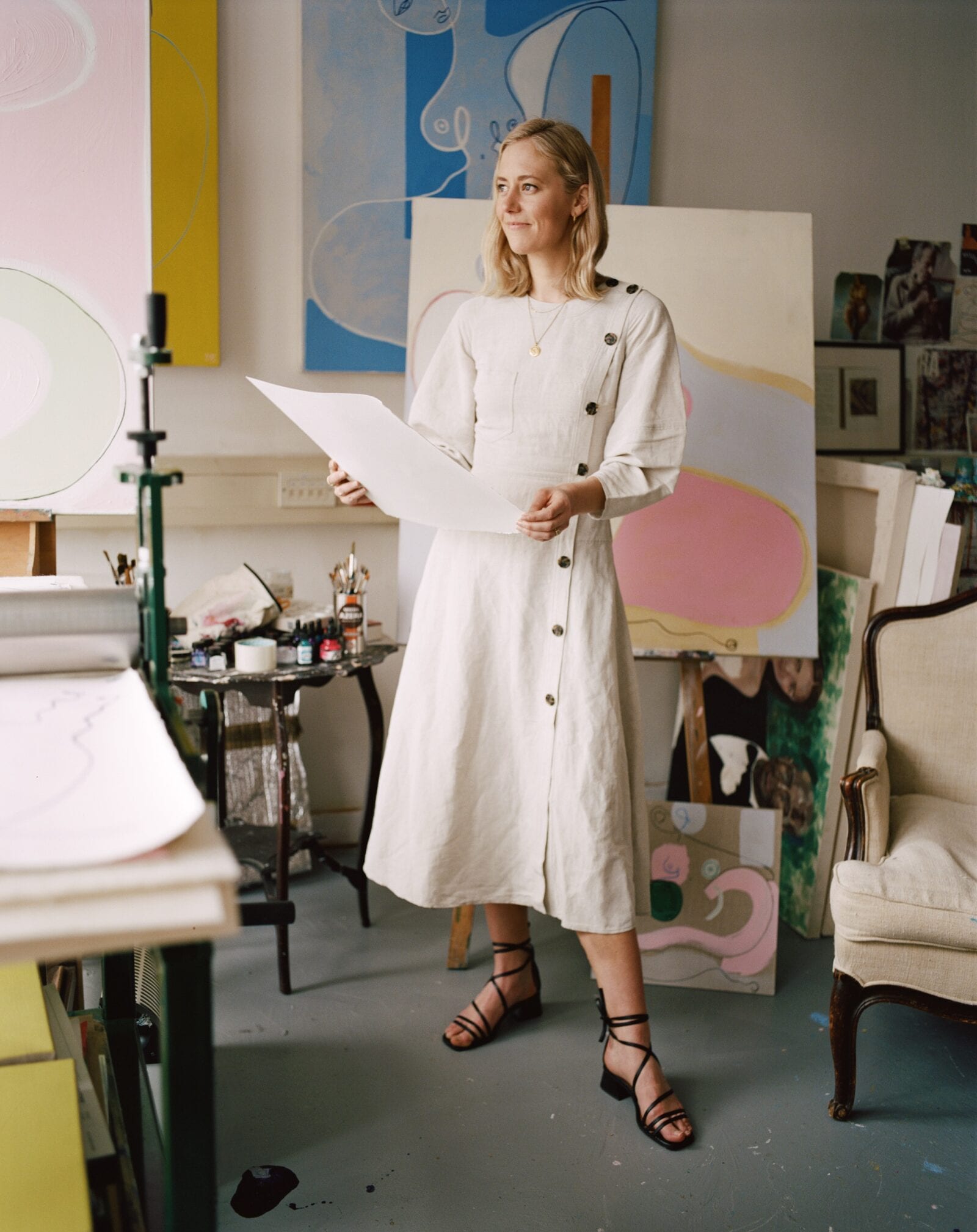
Georgia Spray, the creator of Partnership Editions, speaks to us about setting affordable price points and evolving her business, as well as her top tips for new collectors on a budget.
Georgia Spray is the founder of Partnership Editions, a London-based online platform that connects emerging artists with emerging collectors. Known for launching the career of Instagram favourites including Alexandria Coe, Partnership Editions specialises in affordable pieces and a highly-curated range. With individual artworks starting at £50 and stretching up to the low thousands, the platform has also taken on some more established artists, working in collaboration to create pieces for a lower price bracket. The vast majority of the artists with work available via Partnership Editions are women. Their mediums range from pastel to watercolour and everything in between; the one consistency running through the work is the keen eye of Spray, who curates the entire collection.
We met on a rainy afternoon last autumn at Partnership Editions’ latest pop-up, ‘In the Studio with…’, at the newly opened Islington Square in London. That morning, thirty or so (mostly millennial) women, plus a couple of men, had gathered in a large, light room to draw the life model Lily Holder in one line, then two lines, then three. Spray introduced Alex (Coe, who was leading the class, sharing the secrets of her signature style) and then stood at the back of the room and watched with a smile. Afterwards, we talked about the democratising power of Instagram, the hierarchy of material, transparency in the art world and, of course, starting out as a collector.
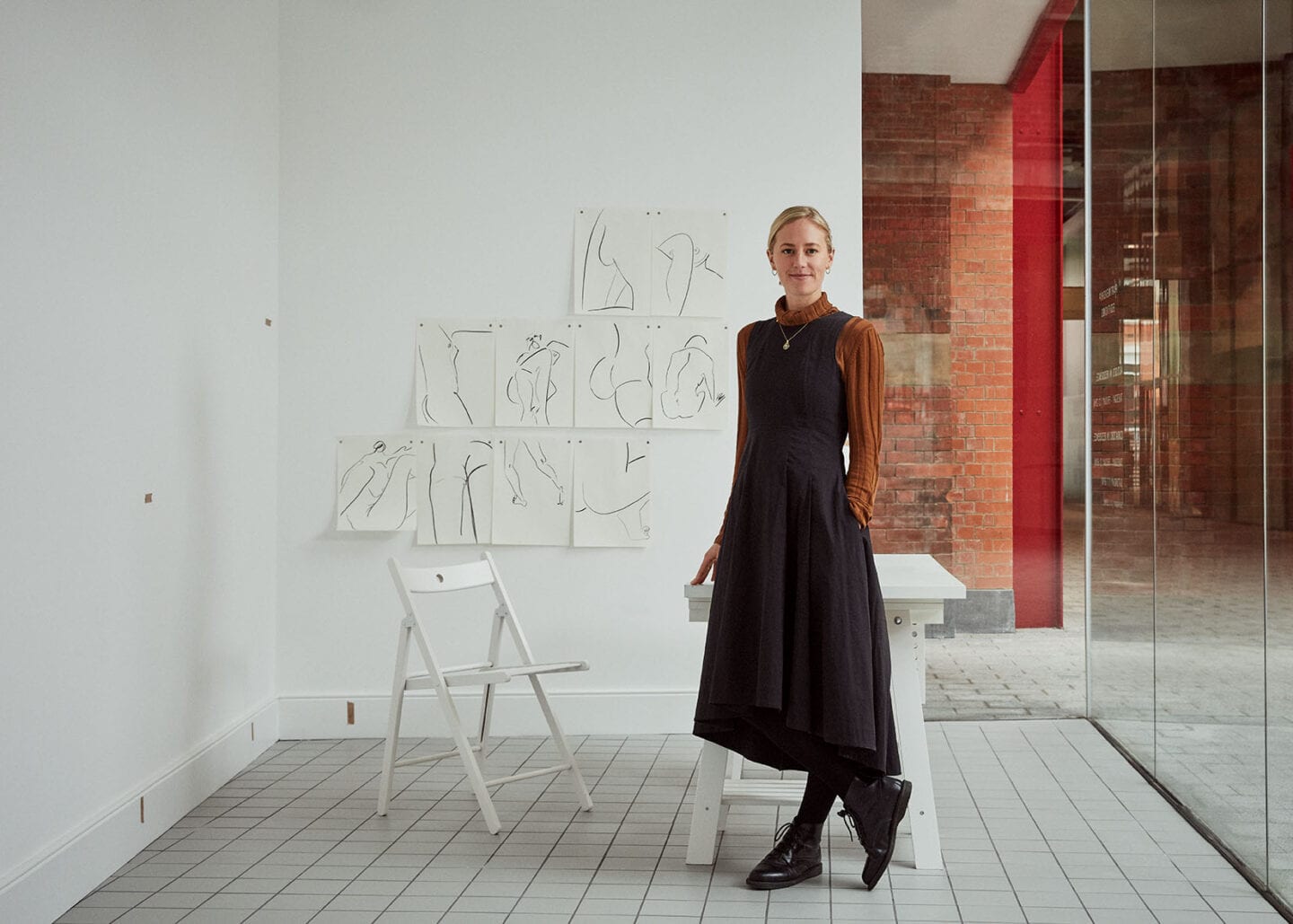
“Buy what you like, not what you think is going to be an investment or make you money. You’ll only be disappointed if it doesn’t, and actually, the investment is in the joy of owning it.” –Georgia Spray
Why did you create Partnership Editions?
I worked in the traditional commercial art world for about six years, at places like Christie’s, then I worked for an art dealer who was very much in the high-end spectrum of the art market. Whilst it was a very good training ground, I felt like there was this disconnect between that and a lot of people like me, who love art but didn’t really know where to go to collect it or how to start a collection. It happened to be at a time when my friends were buying their first flats and were very house proud. They wanted to own something that was more than, like, an IKEA poster, and they knew that I worked in the art world and said “So where do we go?” I didn’t really have a place that I felt I could point them in the direction of, and that’s what really planted the idea in my head. I thought, if I can’t point them in a direction and I actually work in the art world, how would someone who doesn’t know about art know where to start?
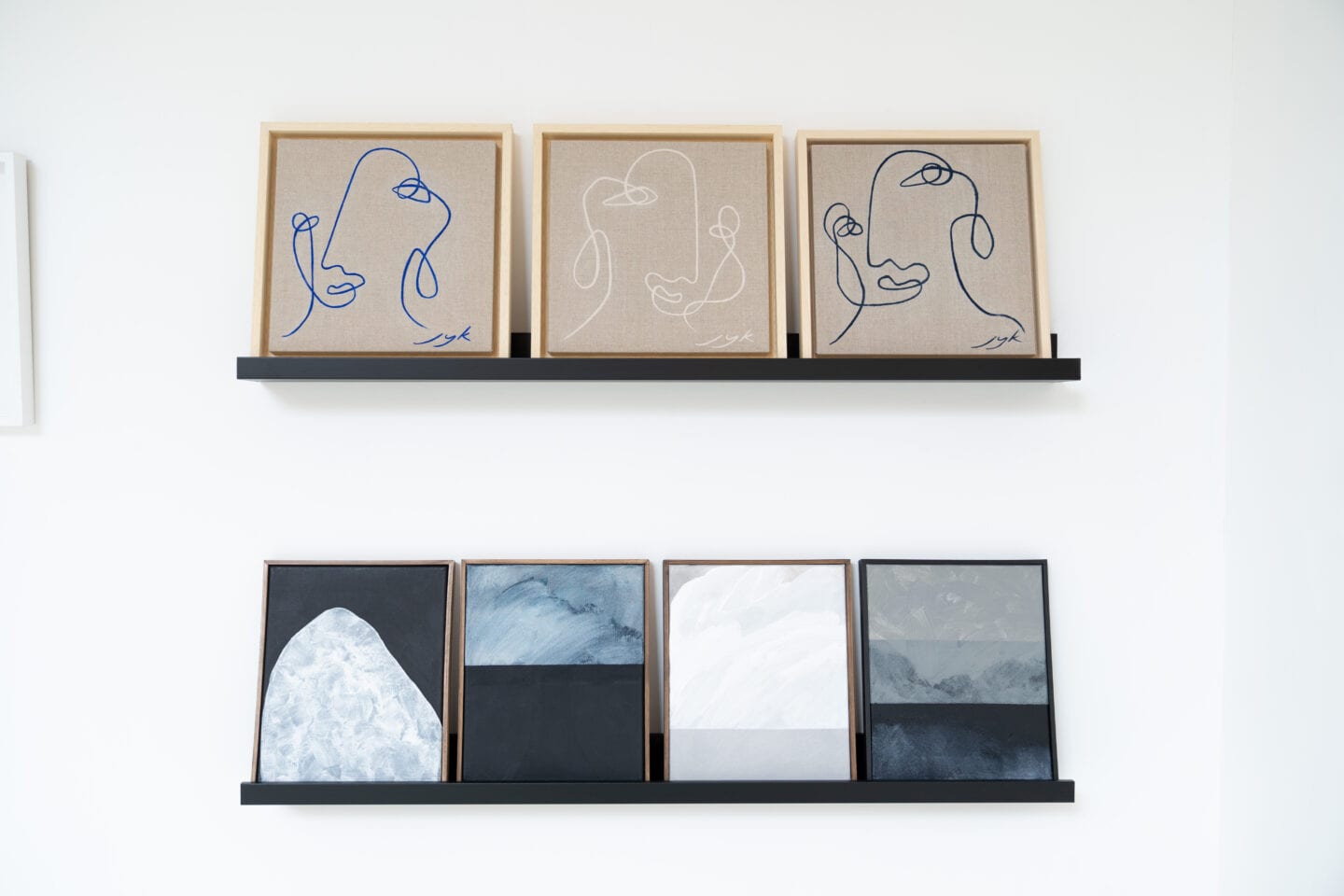
How does Partnership Editions help new collectors?
Obviously, lots of places focus on affordability, but the difference is that affordable art platforms can be quite overwhelming in terms of the volume that’s on there, and they lack a bit of curation. And there are things like the Affordable Art Fair, which are often not that affordable. So it’s trying to keep a clear sense of the artists that we work with: I choose them because I really believe in them and I think they’re amazing. Some people might not like my taste and therefore they won’t shop with us, but the people that do tend to want to come back, and they feel connected to the artists, which is nice.
It’s a much more personal experience, then.
It’s personal, and the other thing that we try to do is take art outside of the traditional gallery space, like here, making it a more interactive experience by doing live artist studios or inviting people to life drawing. We’ve done brand collaborations quite a bit. A lot of what we do is trying to show the process behind the art because seeing something framed in a gallery doesn’t give you much of an insight into how it was made, and I think it is really important to show the entire life cycle of the artwork, not just to hang it in your home. I think you get more from it when you know what goes into it, and someone like Alex Coe is a really perfect example of that: I think some people see it and think it’s a line drawing of the female nude, but actually, you probably found from doing the life drawing today how much skill goes into being able to capture the body in a few marks.
With artists – for example, with Alex – how does the relationship form?
Each artist is different. With Alex, she only became a fine artist quite recently. Before then, she was working in fashion illustration, and we chatted very early on in her career when she wanted to establish herself more as a fine artist. I always visit them in the studio and we strike up a relationship before signing on, but it really varies. Now, we get a lot of artist applications which we go through every day. Otherwise, I’m always on the hunt for artists, whether that’s through Instagram or degree shows or word of mouth – that’s a really good one because an artist will have a network of artists, so it really opens things up.
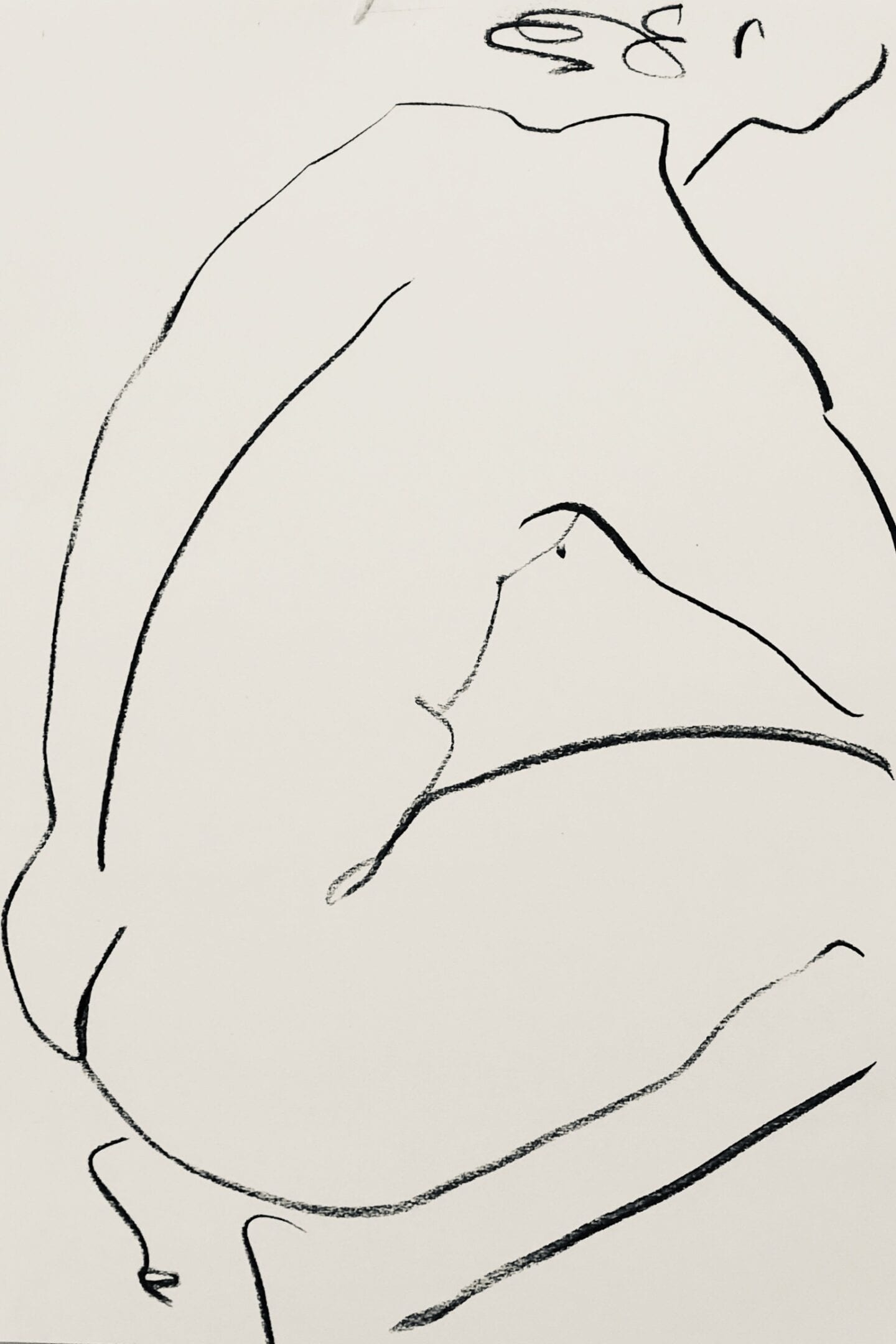
How do you know when you’ve found an artist that’s right for Partnership Editions?
Ultimately, we are a curated platform so it’s not about onboarding a new artist every month, for example. It has to be the right fit. There are a lot of different variables that need to fit into our structure, like the pricing, the style. We tend to work with artists who are series-based because, obviously, if they are quite affordable, then they need to be producing quite frequently. That tends to work for them, as well, because they’d rather be busy all the time, keep producing works and have a market to sell them, rather than feeling like they’re building works up in the studio that nobody gets to see.
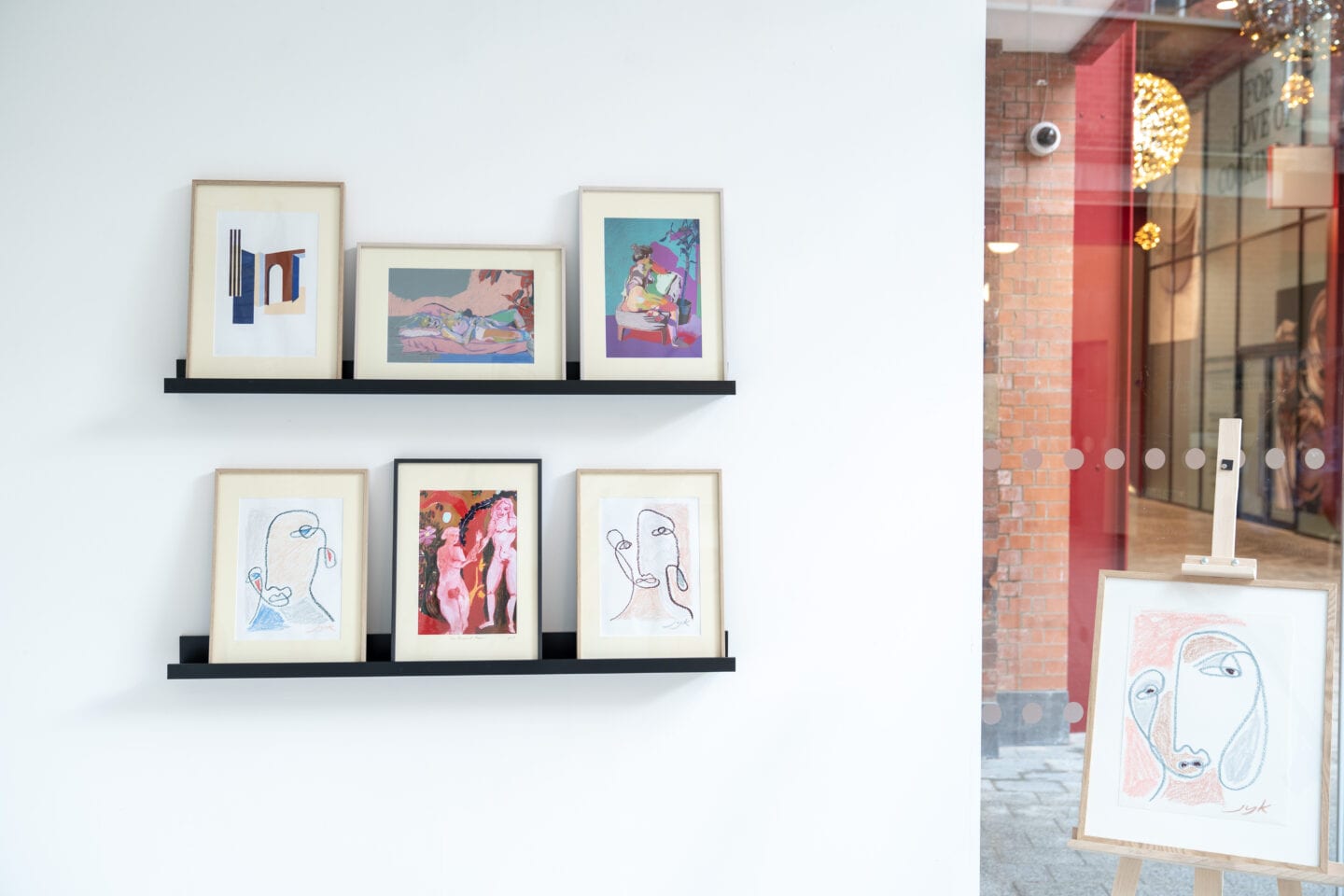
What are the advantages for an artist to get involved with Partnership Editions?
We’re different from the traditional gallery model because we don’t necessarily represent the artist, as a gallery would. Part of why it’s called Partnership Editions is because we enter into more of a partnership from the beginning. They might already sell their work on their own platform or with other retailers, but they create collections for us and then, as that relationship evolves, sometimes we take on the artist as their agent. That’s started to happen more recently. Sometimes, we can both see that they’re selling well on the platform, and they feel like their time is best spent in the studio making the work and letting us handle the sales.

So there’s room for artists to grow.
Venetia Berry is a good example of that: we started working together right at the beginning of her career, and now, she’s got a much bigger profile. She’s found that she’d much rather be in the studio creating work than responding to emails. She gets a lot of private commissions and a lot of brands want to work with her, and we’re best placed to deal with that because we’ve got a sense of what is good for her artistic career as well as commercially. We’d obviously never want to suggest that she works with a brand that might affect her market value. It’s a very collaborative thing that we always have to talk about, but she’s quite happy to have someone manage that side of things. It’s something we’re learning from as we create it. We have the benefit of starting this business at a time when the art market is changing, in terms of Instagram – and I think that’s the same across so many different businesses – and so we have to be adaptable and recognise that we can be different things for different people. We can work according to how artists want to work, so we tailor our services to what they want rather than saying “This is how we work.”
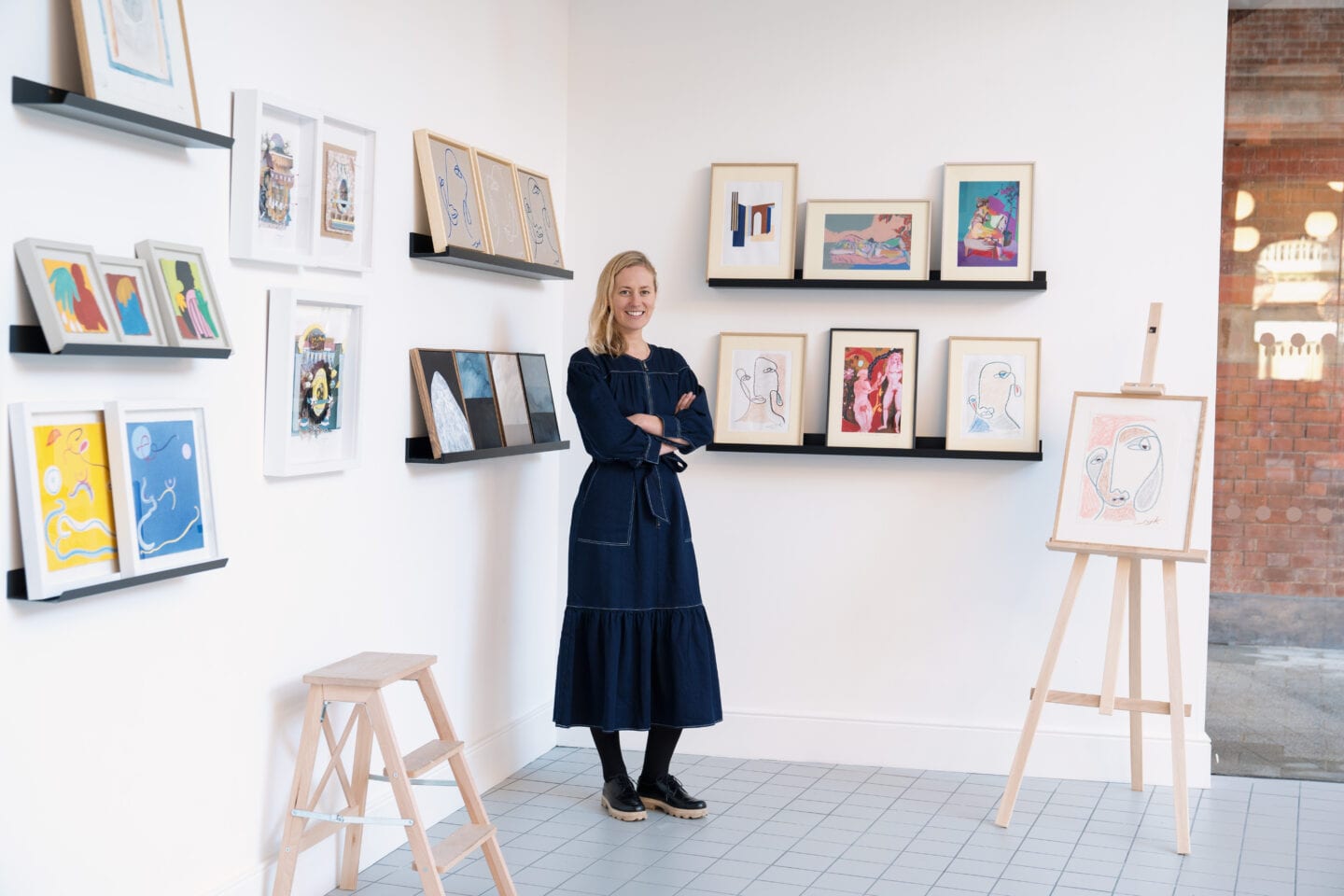
How important has your professional background in the art world been?
The thing that has been really helpful is the idea of pricing because it’s such a speculative thing. It’s so hard to set a price when there is none pre-existing. When you work at Christie’s, the auction market is set on previous results, so you’re basically looking through sales results thinking “This is similar – a similar size, a similar look, and it sold last year for this, so we can price it at roughly this estimate”. But we’re creating the price from scratch and that’s a very hard thing to do. It’s a fine balance between what someone will pay and what you’re creating. Artists – well, anyone – would hate to put a price on something they’ve created, so I think that’s what the art world experience has allowed me: to get a sense of that, but also the confidence to say “I think this is the price, and let’s just do it and see”.
How has the company grown since you started out on your own?
It was incorporated in December 2016, and then I was working for the first year and a half for this art dealer. It was full time, so I was doing this on the side, and then I left that last May to go full time. And then in January 2019, I took on Ellie, and we’ve just taken on another person, so slowly growing.
As a start-up, roles are less defined and everyone does a bit of everything, but my role is finding the talent and keeping those relationships. Because we’re an agency and consultancy rather than a marketplace, all the relationships we have with our artists are very close. We’re on WhatsApp all day! As an e-commerce platform we have to have someone to manage the website and the social. We sell a lot through Instagram, so that’s quite a big thing to manage. I still do a lot of the Instagram myself because I think it’s important to have that authenticity and tone of voice. Most recently, we’ve brought someone on to be on the client side.

Has your client base changed over that time?
Although we have the online platform and people can transact through that, we’re working more and more with interior designers, and people like that, who might want bespoke commissions, and that’s something we can offer. They might see something and love an artist’s style but they’re working for a hotel group who wants a three metre mural, so we can do tailored commissions. Those are quite time-consuming and need someone with a lot of client facing experience. But, as I say, it’s very much everyone doing everything. We have exhibitions and events and the dinners, so everybody mucks in.
What is a typical day like for you?
No day is the same. We’ve just moved into the new studio, so now my typical day is a three minute walk down to the studio from my flat, which is nice. It’s very team-based, so at the beginning of the day, it’s the three of us sitting down and going through who’s going to do what that day. I’m out and about quite a lot going to artists studios and meeting with potential partners. A lot of it is the strategy – we have to think ahead. We’re always speaking to artists about what they want to release next month. That’s a big conversation because different artists work at different paces. It’s not, for example, each artist consigns ten works per month. It might be that one artist takes three months before they create their next collection. It’s these cycles of artworks and keeping on top of which artist we need to get in touch with, who hasn’t had a new release recently, how we’re going to help them curate what the collection is going to be about.
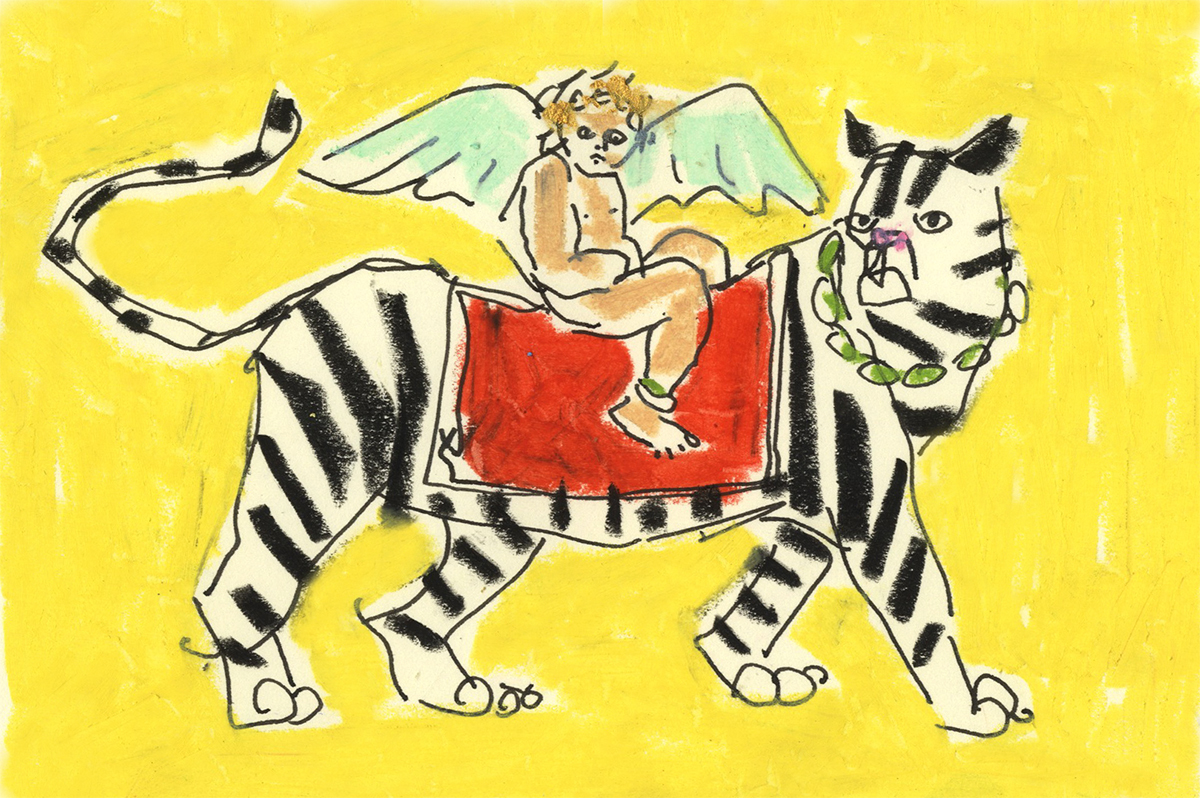
So it’s a collaborative process.
That’s quite a lot of what my job is – it’s talking to those artists. I think they also really like being able to discuss how their practice is going to evolve because the danger, if an artist is selling really well, is that they feel they have to keep doing the same thing. They never want to feel stuck, so we’re always talking about what’s next and how to strike a balance between honouring their market – if there’s loads of interest in a particular style – without feeling like they’re there just to please the crowd. We’re constantly thinking about that, but also how to curate the collections: releasing something that has a narrative and a theme, rather than spatterings of random pieces. It’s nice to release them with a bit of a story, I suppose.
How has having the studio changed how you work?
Now that we’ve got the studio, the idea is that we’ve got all the artworks in one place. We’re photographing them, checking them in, putting them online – there’s a lot of styling artworks and shooting them in ways that will help people understand how they might fit them into their home. We’re doing that all in house, now. But, for example, for the next two months, we’re going to be here. So it’s always chopping and changing.

What’s next for Partnership Editions?
I would really love to do more physical pop-ups, like this, where we can let people come and meet the artists, see how they work. I would love to have a permanent programme, although not necessarily permanent in terms of space. They could be in pop-up venues; they could be international. There are so many amazing residencies that are run in different venues across the world, and I think it’d be cool to have a Partnership Editions residency.

Which artists are you excited about at the moment?
We’ve got some exciting artists joining the platform at the moment: a Swedish artist called Petra Börner and a multimedia textile artist called Charlotte Edey. Petra does mainly Indian ink drawings – they’re really amazing – but she’s also from a textiles background. She used to do textile design. There are line drawings as well which are sort of graphic, but we are releasing a series called ‘Turban Ladies’.
It seems like there’s no particular restrictions on the medium an artist uses, so far.
And I would hope that there isn’t in the future. I think the nice thing about the art world now is it’s a lot more versatile and there isn’t such a hierarchy of material and practice. It used to be that there was fine art and then there were other practices but now I think it’s a much more level playing field.
At the moment, from a logistical point of view, it’s hard for us to do things like sculpture because we don’t have a warehouse. Works on paper tend to be the most practical for us, although we are moving more into canvas and higher value pieces. When we started the platform the price range was £50-£1000. Now, the entry level is staying the same but we’re increasing the top level because, as artists grow, we don’t want to limit that. As long as we always have more emerging artists coming through the bottom of the ladder, the more established artists can climb, as can our collectors. It’s evidence that the platform is evolving, and we want to always stay with our collectors rather than them feeling like they’re going to have to move on, and it’s the same for the artists.
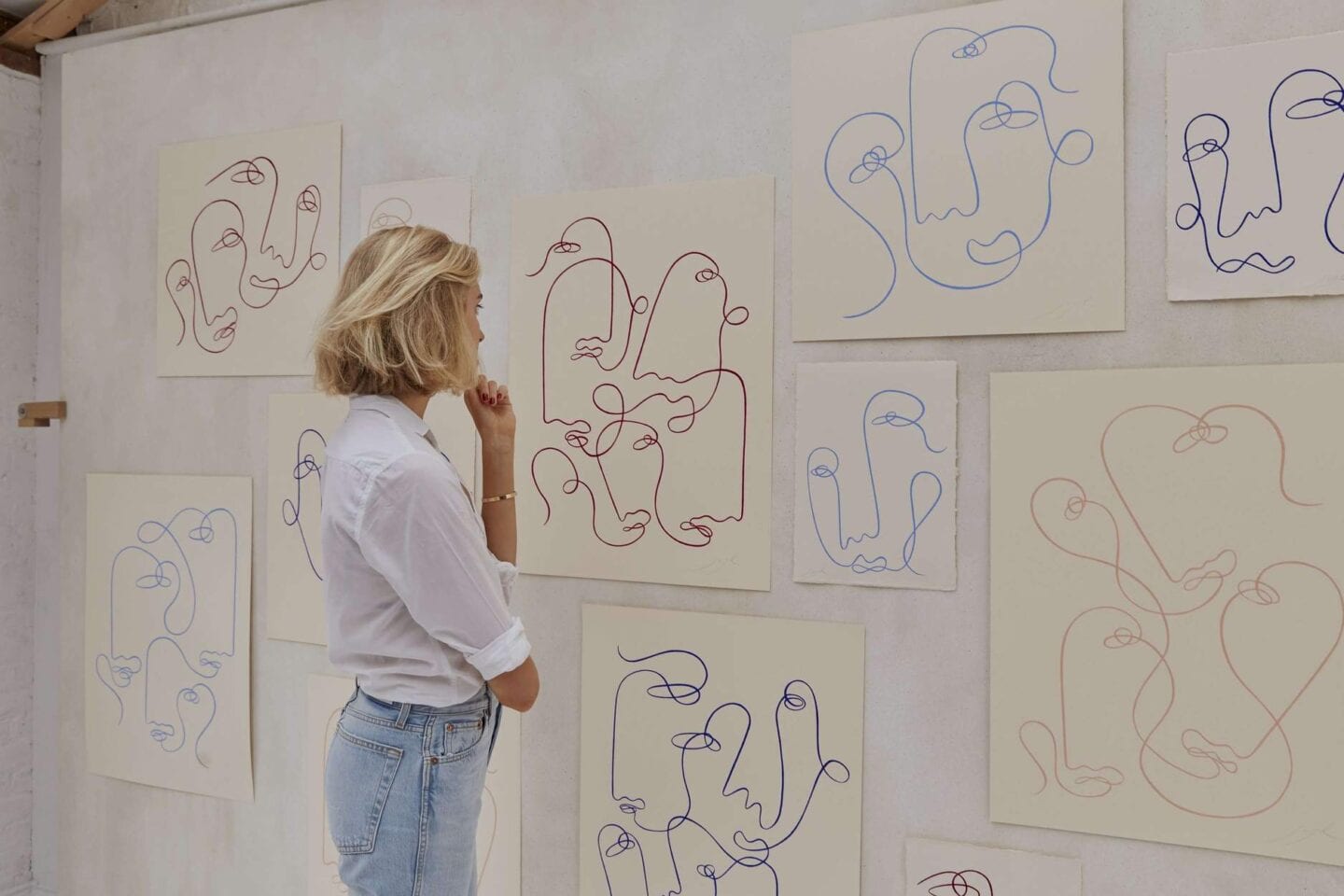
Do you think this group of collectors, looking for something between the IKEA poster and the high-end, is a new concept?
I do think that Instagram has had a massive role to play. People now want to invest in art not just because they want to own a physical product, but because that artwork represents them buying into a personality. If someone buys an Alexandria Coe, they feel like they know her because they might follow her Instagram and they’re supporting her career and her as a person, rather than just buying an image, which I think is really exciting. People are also becoming very interested in interiors and home, again maybe through Instagram. People are moving away from fast fashion and all of that, and collecting art is a really rewarding process because it’s got longevity – it’s not throwaway. It’s nice to know that you’re putting your money towards something you’re going to keep forever.
Do you think a ‘low’ number of Instagram likes could cloud someone’s judgement of an artist?
That’s definitely a problem. If you think about auctions, you need to have multiple people interested to get the price you want to achieve, and the same can be said with art. You put something online and a few things sell straight away, and if something is sitting on the site for a bit longer, people start to think there’s something wrong with it. It doesn’t mean that it’s a lesser work – it’s just that some things sold more quickly. People are so swayed by other people’s taste.

Do you have any tips for people who want to start building their collection?
Number one – this is a bit of a cliché but it really is true – is to buy what you like, not what you think is going to be an investment or make you money. You’ll only be disappointed if it doesn’t, and actually, the investment is in the joy of owning it. If it does make you money, then that’s great. Often, the things you love, you love for a reason, so it’s more likely that they will turn out to be an investment.
The other one is that there is this big misconception about art consultants and art dealers. I suppose I don’t really call myself either of those, but I think that a lot of people think they can’t ask for advice without having to pay something. Actually, we’re here to help you navigate the art world, not to charge you more, so trust in curators and start asking questions. I think people feel, with art, like they’re going to say the wrong thing. Really, don’t be afraid to ask because no question is too stupid. Don’t be afraid to ask why something costs what it does. I think that’s a question that’s on a lot of people’s minds that should be demystified. That’s what we’re trying to do with Partnership Editions: help people understand how we price things. It’s about starting a conversation and contacting artists. For an artist, it can be a very solitary existence in the studio all day, so interaction and asking questions directly to artists can be a really great thing. People are very willing to talk about it, so don’t be afraid!


